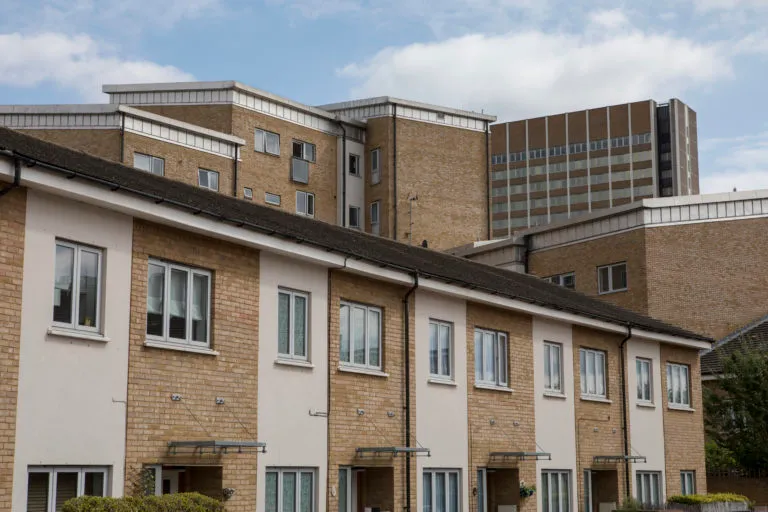The threat to raise the small sites threshold must be permanently removed
Published: by John Bibby

In a win for the campaign for more social housing, the government has backed away from making more new developments exempt from providing affordable and social housing by raising the small sites threshold.
The change looked set to make sites owned by some of the country’s biggest builders and offshore developers exempt from making any contribution to desperately needed social homes. So stepping back from it is a hugely welcome move. Credit must go to the nearly two and a half thousand Shelter supporters who made their opposition to the proposal clear in response to the government consultation.
However, with the official announcement stating that the change is only not being implemented ‘at this stage,’ there will be concerns that the policy could return at some point in the future. What we need now is confirmation from government that it will be taken off the table for good.
The proposals
Under present rules, councils are only able to use so-called ‘Section 106’ planning obligations to require housebuilders to include a percentage of affordable housing on new developments if they are 11 homes or bigger. All new developments that are 10 homes or less are considered officially to be ‘small sites’ and exempt from making any contribution to social or affordable homes.[1]
The government’s proposal in August 2020 was to raise the threshold for a ‘small site’ from 10 homes to 40 or 50 homes. If enacted, this would have prevented local councils from using planning policy to require a percentage of homes to be affordable or social housing on developments that were 50 homes or smaller.
In the absence of sufficient government money for new social housing, planning policy has increasingly become the main vehicle for delivering new social rented homes in recent years, so raising the threshold would have been a huge blow to much needed new social housing delivery. By the government’s own assessment, it could have led to a reduction of up to 20% of affordable homes delivered through Section 106.
A boon for big builders and offshore developers
Shelter has long been an advocate for small builders and the need to increase the role they play in our housing system. However, A 50-home development is likely to be a long way from what most people would consider to be a ‘small site’ as well as from the type of site most small builders are delivering on.
The reality is that, far from benefitting genuinely small builders who could struggle in a market downturn, raising the small sites threshold would have been beneficial for big builders and offshore developers.
Take just three examples of recent developments that wouldn’t have had to make any contribution to new affordable housing had the exemption been raised to 50 homes:
-
Bellway, one of the country’s biggest builders, wouldn’t have had to include any affordable homes on their development of 48 homes in Farnsfield in Nottinghamshire. Under current rules the company, which had a turnover of £2.2 billion last year, was required to include 14 affordable homes on the development
-
Taylor Wimpey, one of the country’s biggest housebuilders, wouldn’t have been required to make any contribution to affordable housing as part of its 45 home development in Salford, Ivy Grange. Under existing rules it was required to pay £213k to local affordable housing as part of the scheme
-
Clivedale, a ‘super-prime’ developer, wouldn’t have had to make any contribution to affordable housing when it built its luxury 21-apartment block, called The Mansion, in Marylebone. The developer, based in the tax haven Jersey and who received finance from a Dubai bank for the development, was forced to pay £1.2 million towards local affordable housing as part of the scheme
Removing the threat permanently
Considering the contribution that planning makes to delivering new social housing and the sorts of developers that would have benefited from lifting the small sites threshold, backing away from the change is hugely welcome. The Shelter supporters who added their voice of opposition to the proposal as part of our consultation response deserve huge credit for persuading the government to back down.
However, the reasons given for deciding not to implement the change focus significantly on the state of the housing market. This raises the threat that if private housebuilding gets into difficulty the proposal may return.
Instead, the proposal needs to be taken off the table for good on its own terms: because it will reduce the delivery of the social homes the country needs most. And should the economy struggle in coming months, it will be exactly these homes that we need most.
To join our campaign and show your support for social housebuilding, sign our petition.
[1] Unless they’re in a designated rural area, in which case a lower threshold applies